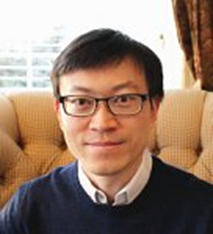RADLAB Seminar
Ultrafast and nanoscale interfacial charge transport and its interaction with electromagnetic waves
Add to Google Calendar

Interfacial charge and energy transport is of fundamental importance to nanoscience and devices. It is critical to the development of quantum plasmonic junctions, ultrafast photoelectron sources, and compact electromagnetic radiation sources (millimeter wave to THz to x-ray), which have applications in imaging, communication, energy, and security. The rapid development in nanotechnology and ultrafast laser optics has opened up great opportunities to control interfacial transport at ultrashort spatiotemporal scales and offers unprecedented scientific advances.
In this talk, I will present recent advances on the modeling of electron transport at contact interfaces and ultrafast electron emission from metal surfaces. Scaling laws for electrical contact resistance between dissimilar materials are constructed for a large range of material properties and geometrical aspect ratios. Spreading resistance and current crowding effects are quantified from the exact solutions constructed. Validated against numerical codes, they are recently applied to electrically pumped nanolasers. A general theory is developed for the quantum tunneling current in a nanoscale metal-insulator-metal junction, covering the direct tunneling, field emission, and space-charge-limited regimes. I will also show our recent theory for laser-induced electron emission, by solving the time-dependent Schrodinger equation exactly, for arbitrary combination of dc bias and laser intensity. Other modeling efforts on geometric diodes, electromagnetic power absorption, and THz Smith-Purcell radiation will be highlighted. Future research prospects on these topics will be discussed.
Peng Zhang is an Assistant Research Scientist in the Department of Nuclear Engineering and Radiological Sciences at the University of Michigan (UM) at Ann Arbor, where he received his Ph.D. degree in 2012. He was a recipient of the UM Richard and Eleanor Towner Prize for Outstanding Ph.D. Research, the UM Rackham Presidential Fellowship Award, and the IEEE Nuclear and Plasma Sciences Graduate Scholarship Award. He has authored journal publications on electrical contacts, classical, ballistic, and quantum diodes, electron emission, electromagnetic heating phenomenology on rough surfaces, surface flashover and discharge, high power microwave sources, pulsed power systems, z-pinches, quantum electrodynamic laser-plasma interaction, and Smith-Purcell radiation. His current research interests mainly focus on theoretical and computational nanoscience and devices, including quantum plasmonic junctions, ultrafast photoemission, and novel compact electromagnetic radiation sources.
 MENU
MENU 
